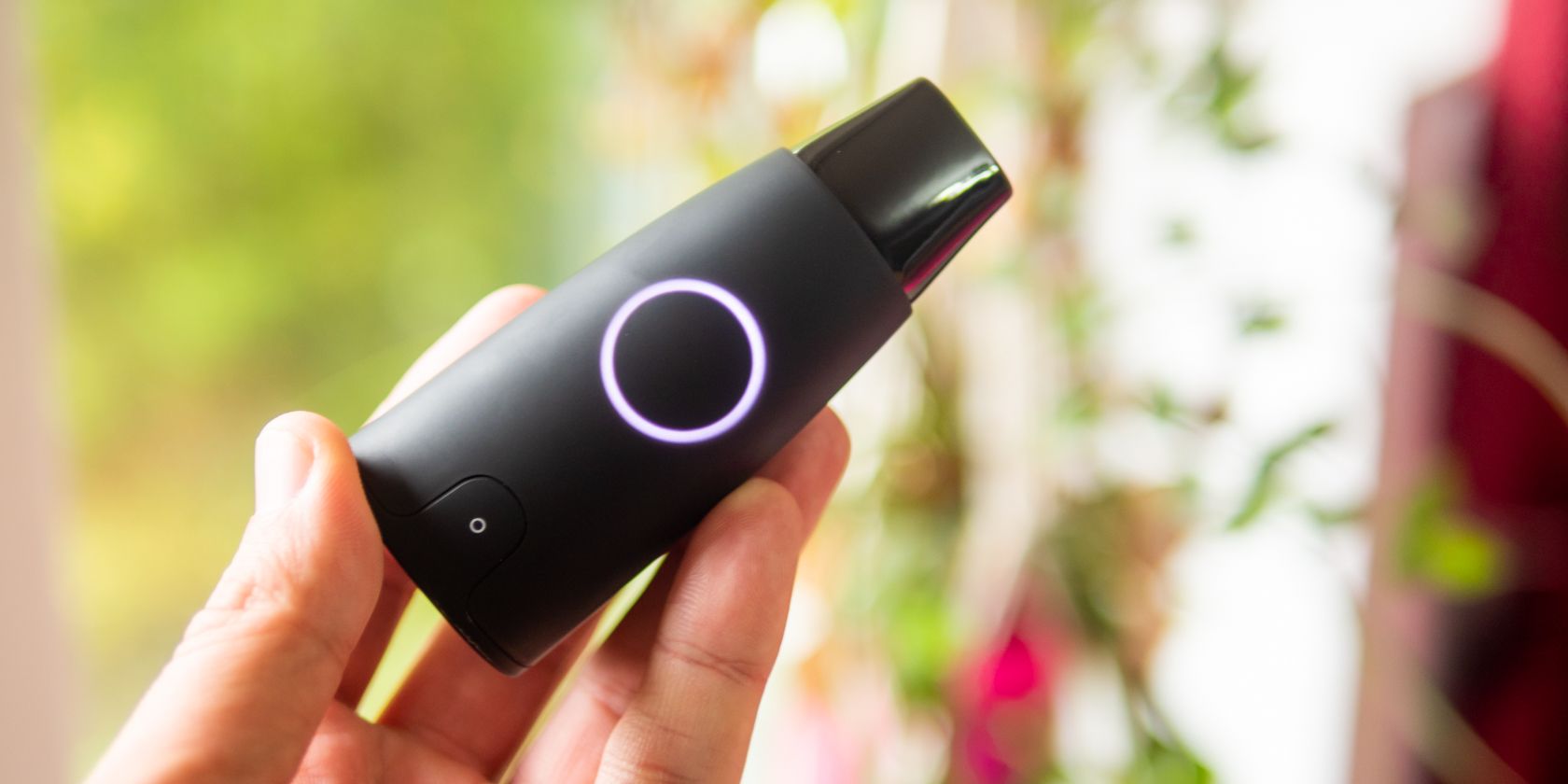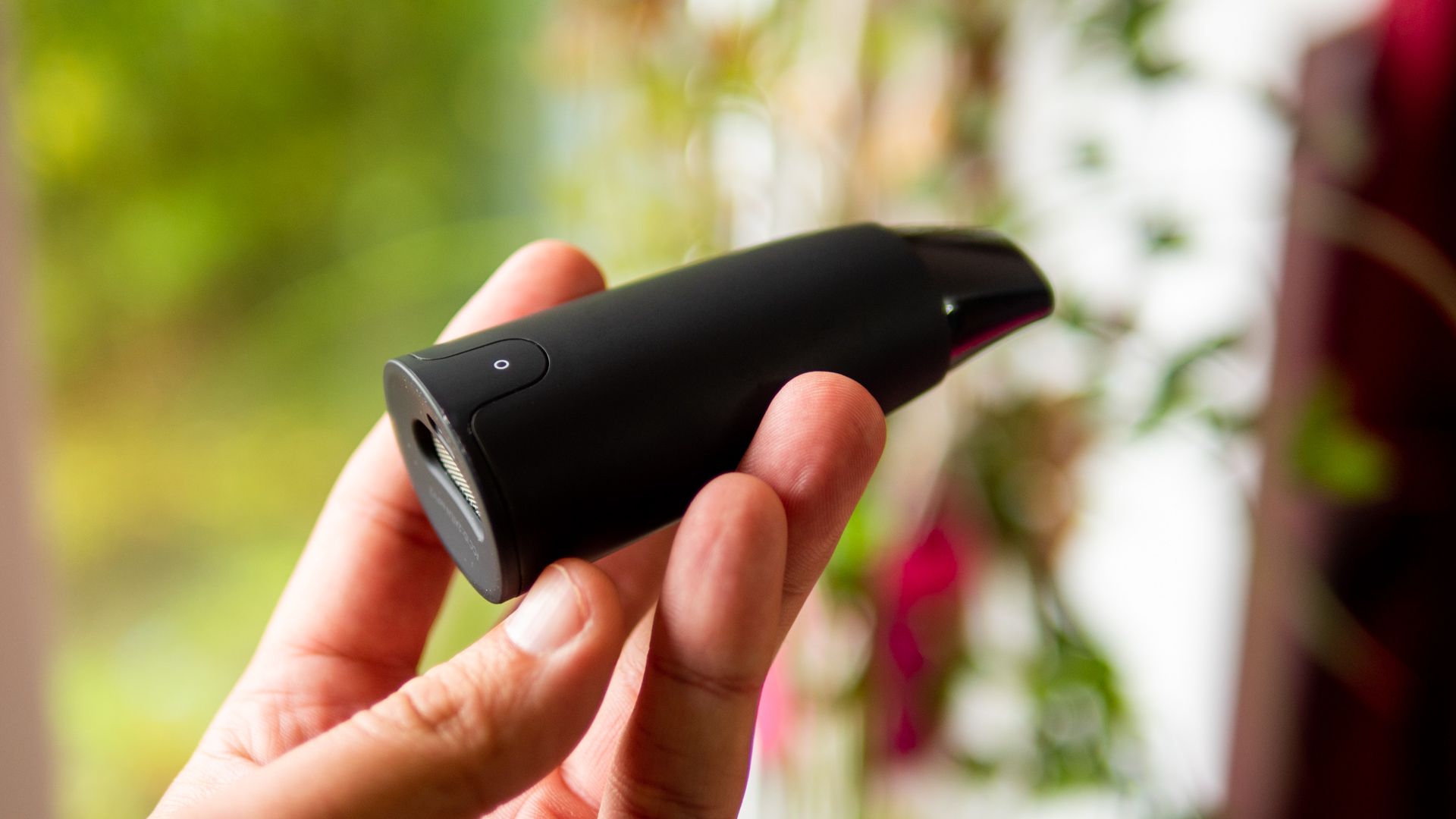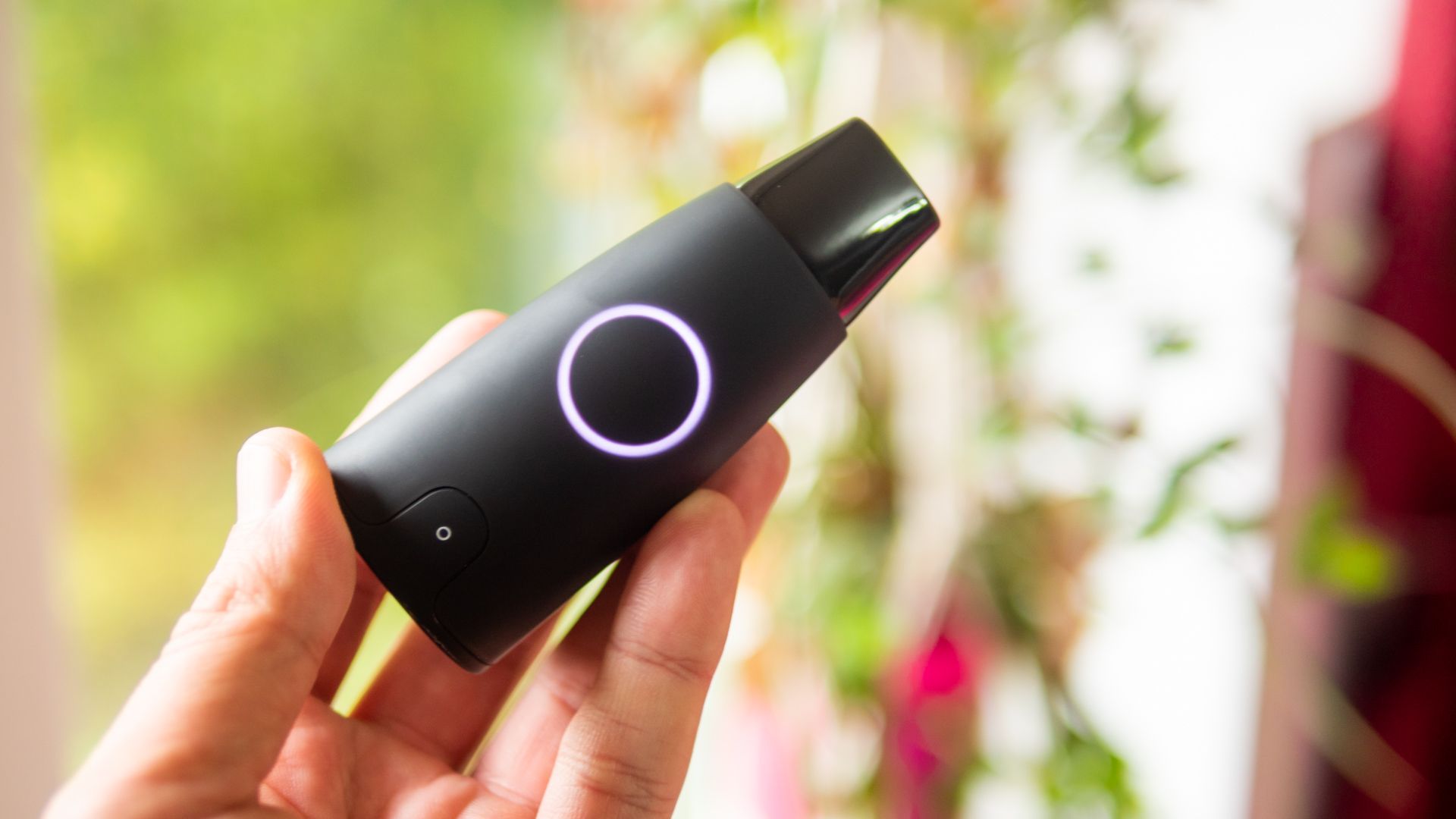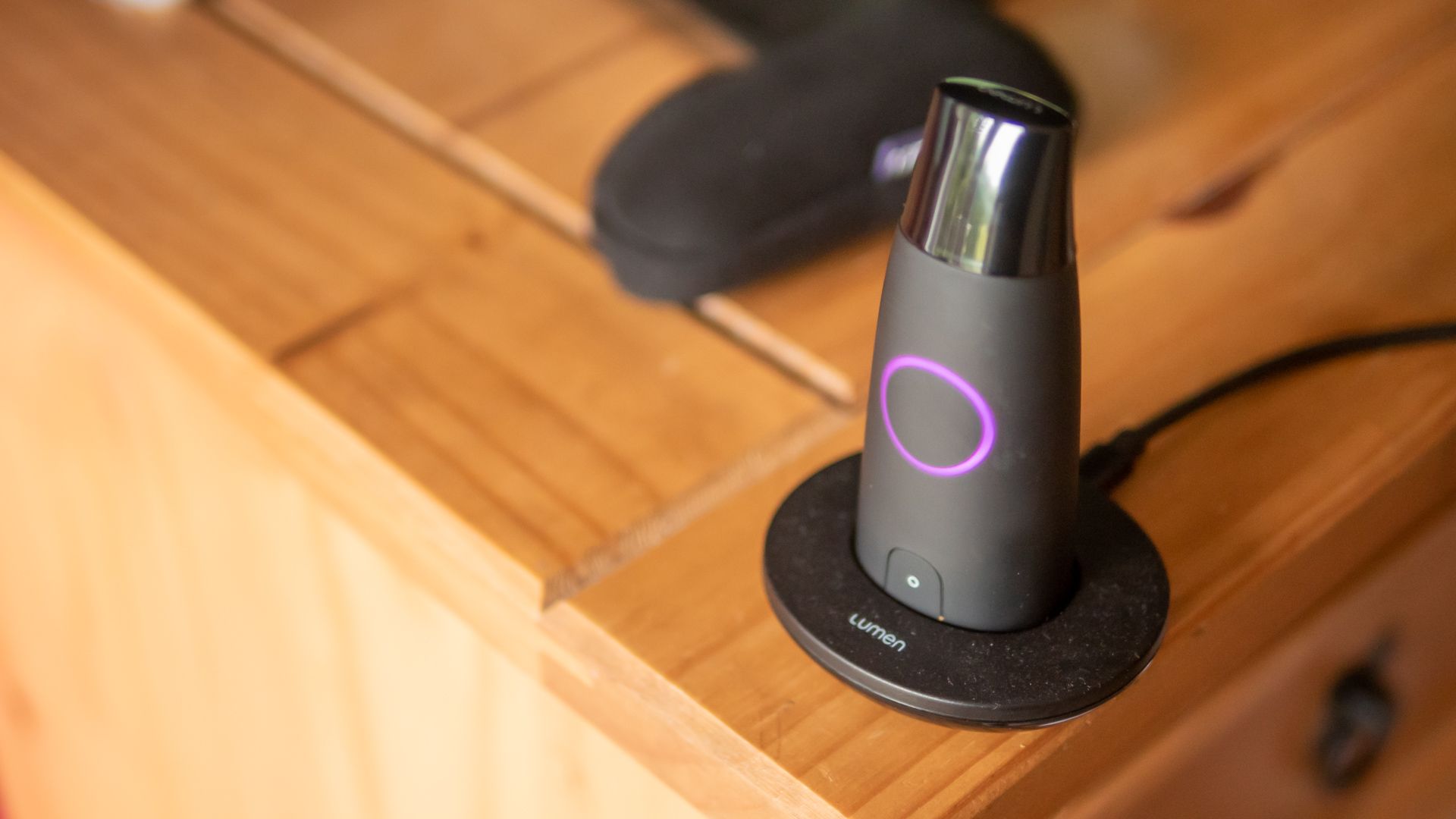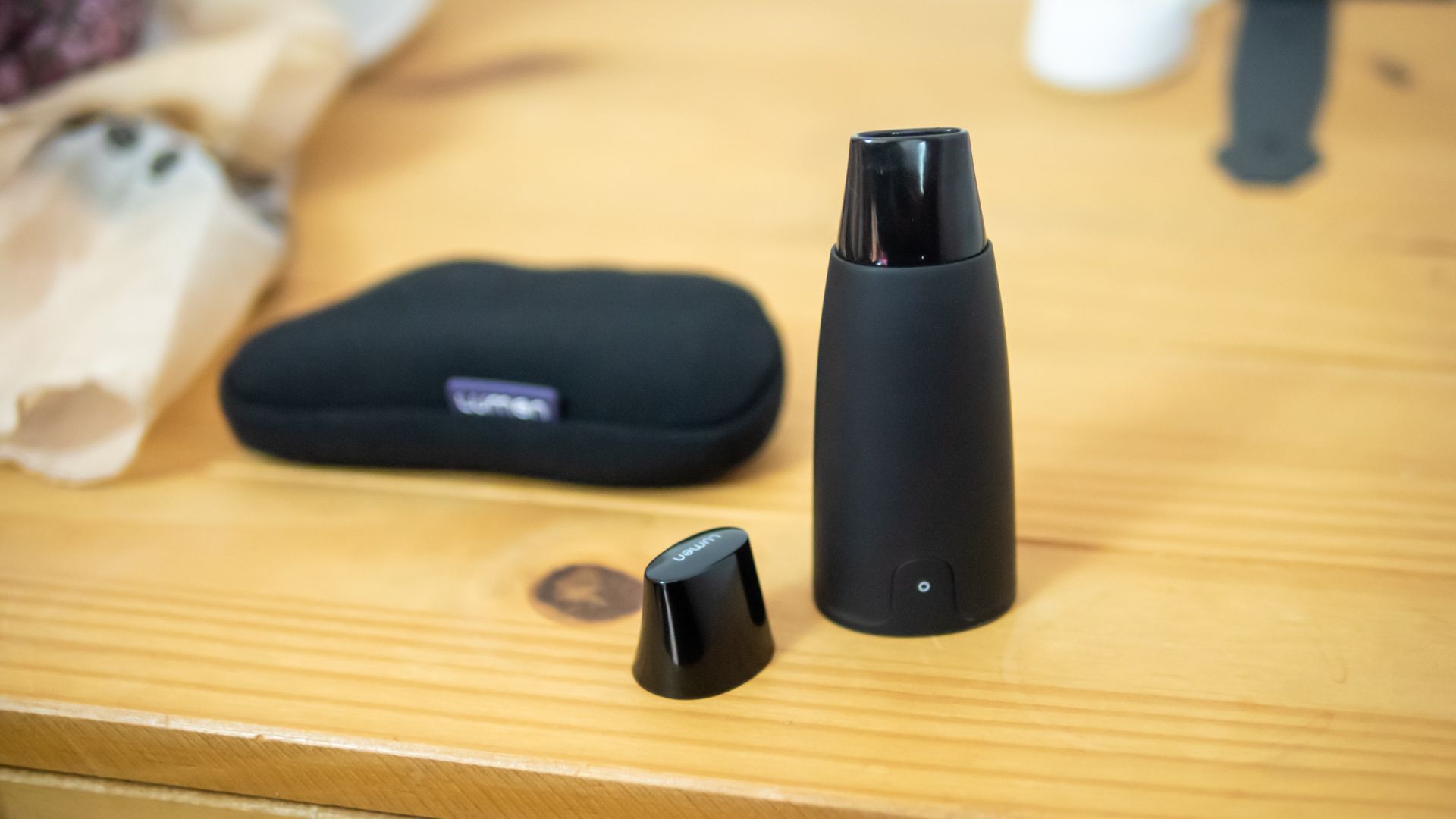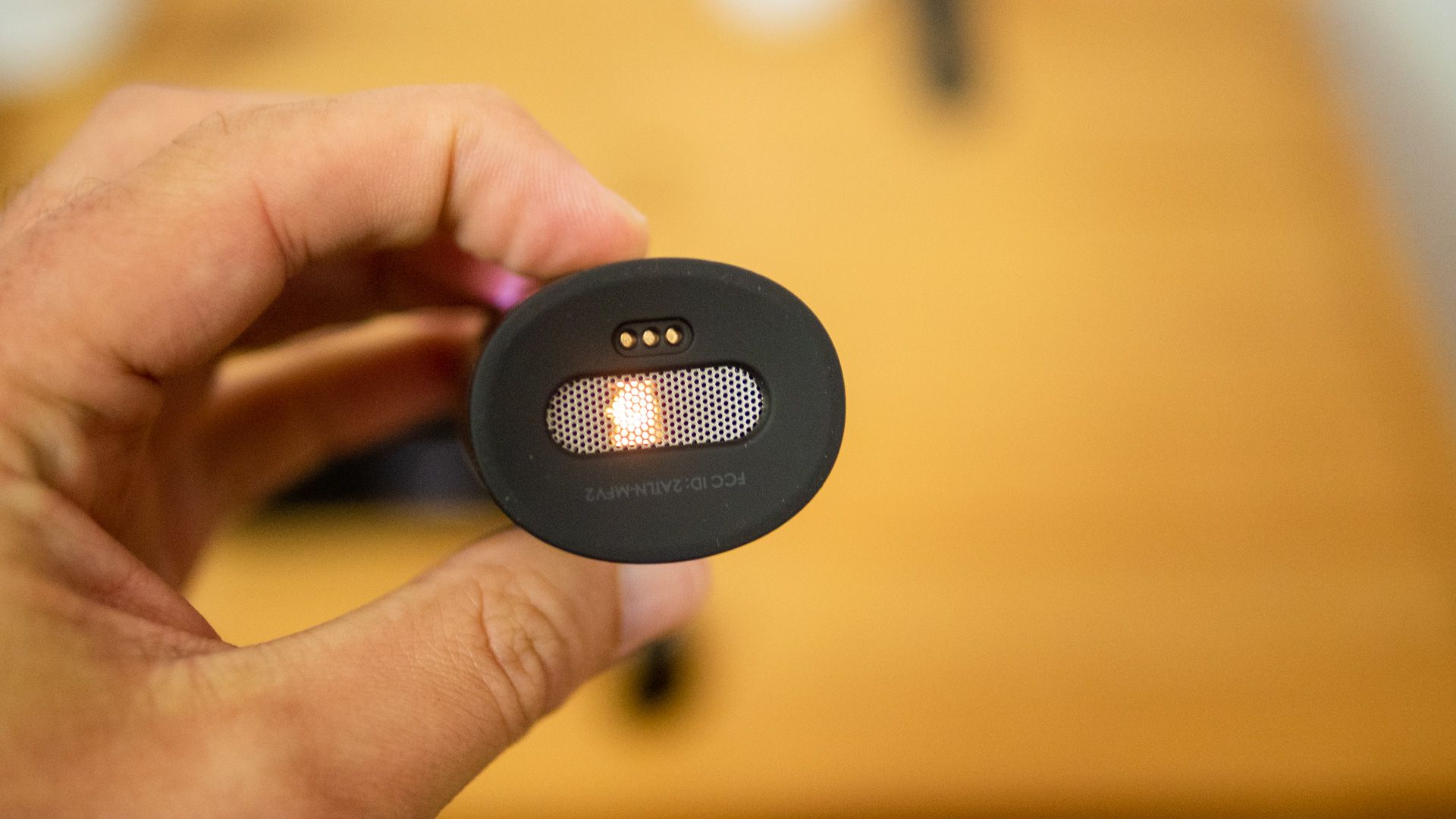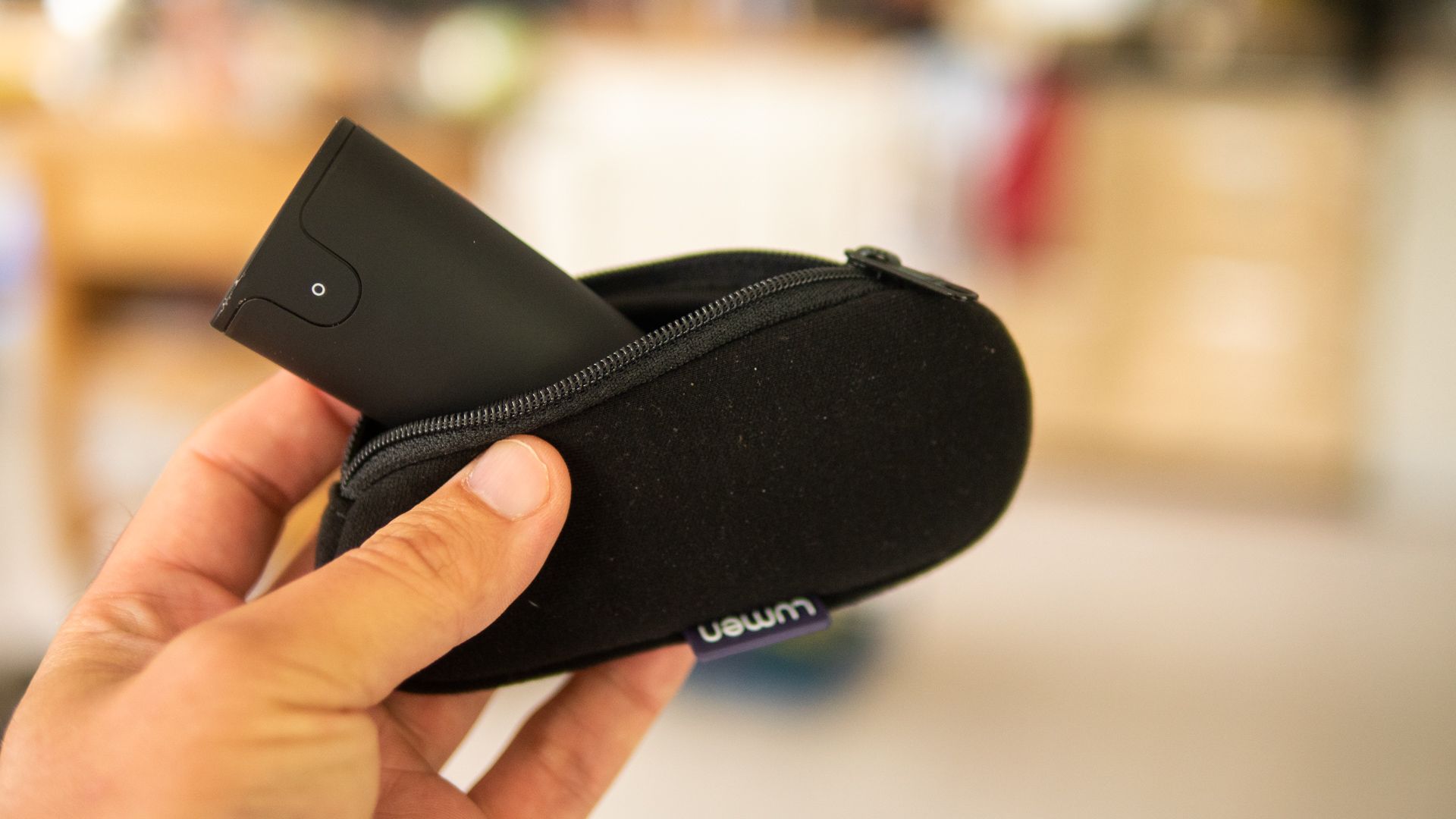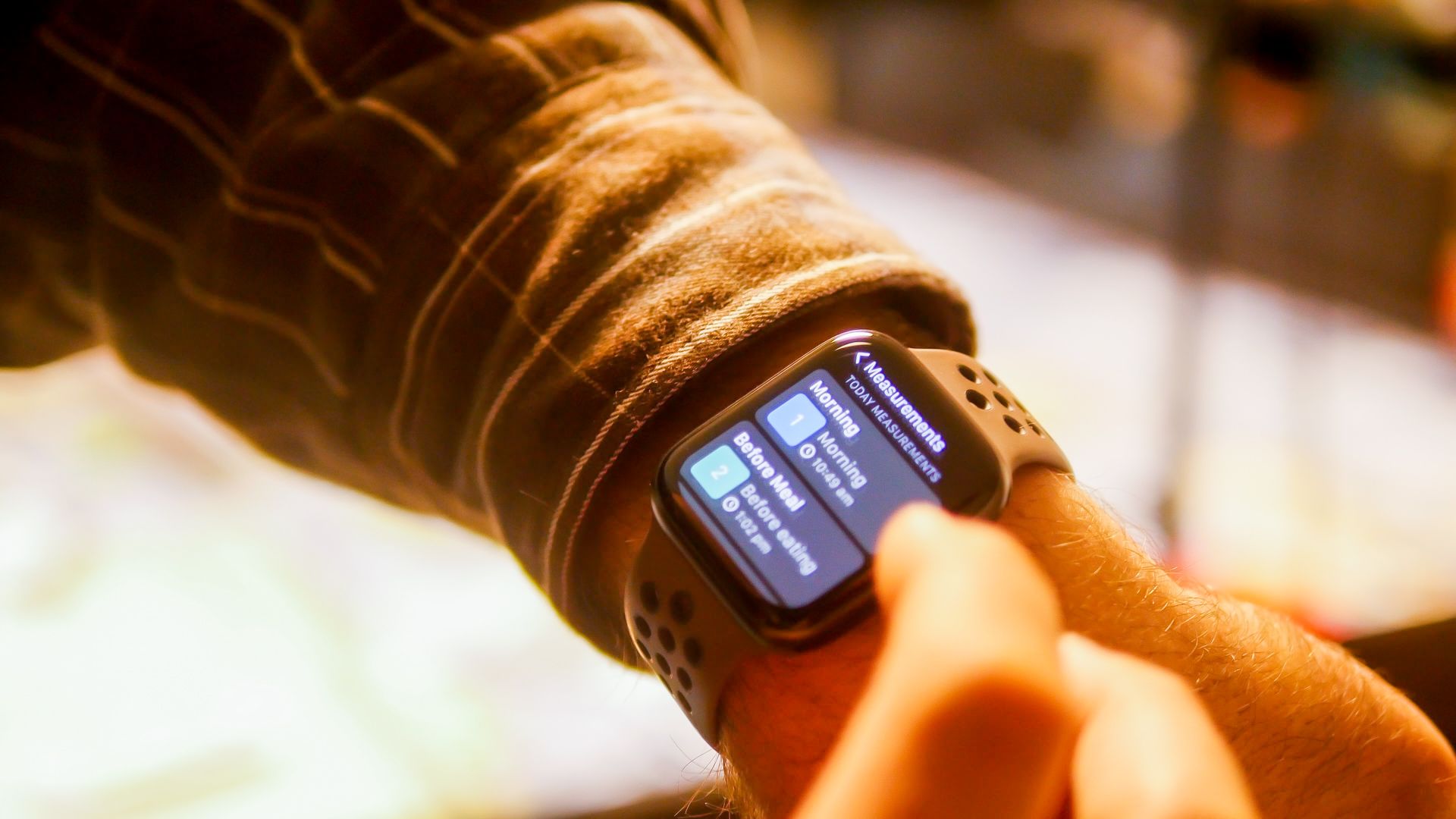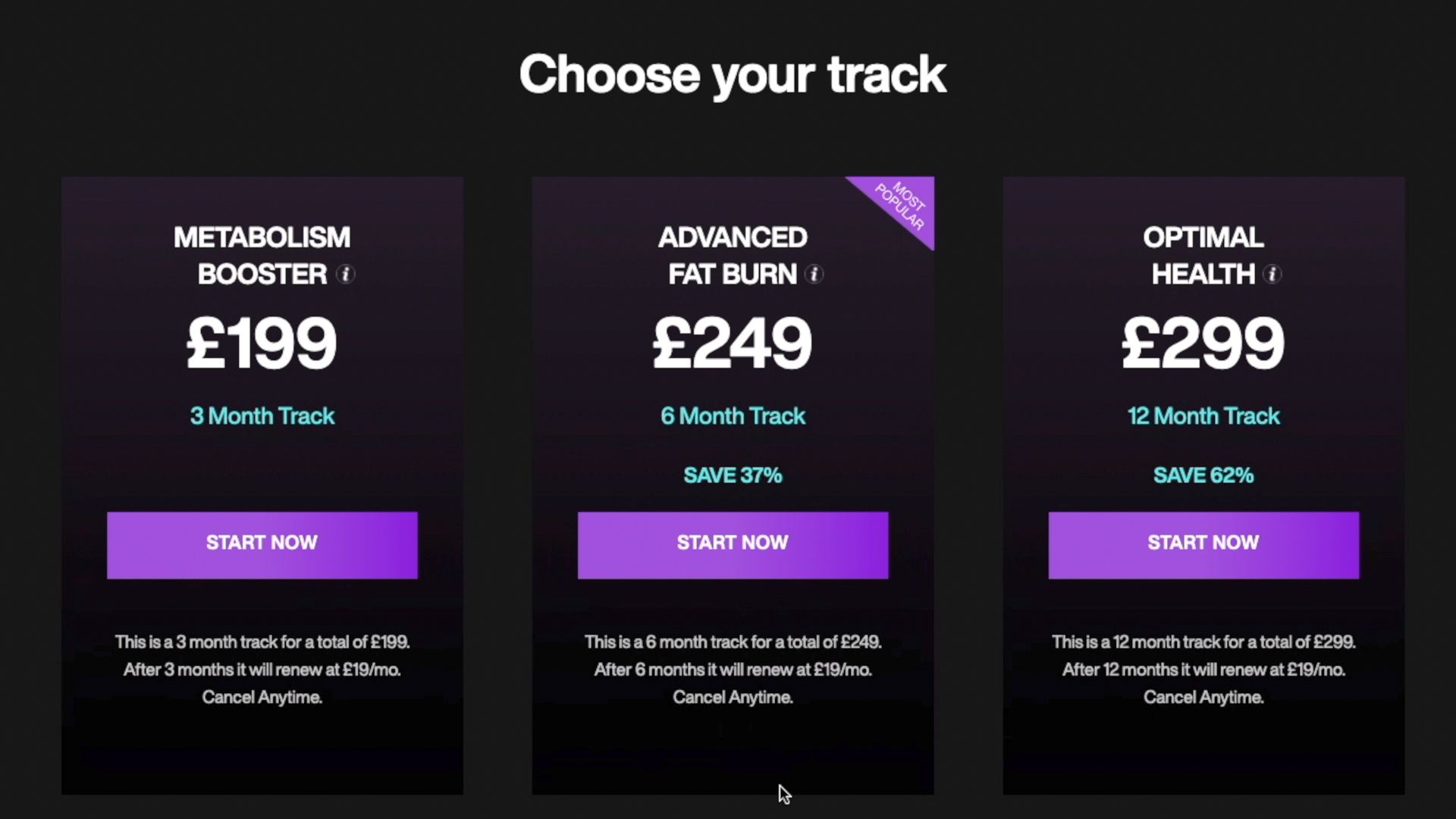Lumen Metabolism Tracker
An easy way to see if you're currently burning fat or carbs, the Lumen offers a complete diet and metabolic gamification system. But is it worth $19/month, as well as an expensive device purchase?
- Brand: Metaflow Inc
- Battery Life: Approx two weeks
- Integrations: Apple Health, Google Fitness
- Simple to use and easy to understand numbers
- Gamified system gives you a Flex score after two weeks
- Recipes perfectly matched to your carb plan and dietary requirements are included
- Requires a smartphone and data connection to open the app and take a measurement
- Each measurement can take a few minutes
- Subscription required after your initial period (which depends on how much you pay upfront)
Lumen is a device for measuring whether you're currently burning fat or carbohydrates, so now you can track your metabolism, too. It's a simple concept, combining a C02 sensor with an air-flow meter. But that's underselling the whole system, because combined with the Lumen app, it forms a complete diet management and metabolic gamification system.
If you're the sort of person who loves to keep track of every minutia of health data; if you own an Apple Watch and do frequent ECGs for fun; or if you're attempting to do a Keto diet—you'll find the Lumen to be a useful tool. But at nearly $300, plus a subscription fee after 12 months, is this a device you or I could use in any meaningful way? Let's find out.
About Me
To be clear, I’m not what some people might call a health nut. I do wear a fitness band; I recently upgraded my MiBand 5 to an Apple Watch, and try to "close my rings" daily. I don't exercise that intensively, or that often, but nor do I eat an unhealthy diet and sit at a desk all day. I do drink far too much, though. My motivation with the Lumen is evaluating this as a useful dieting tool for a layperson, like me.
It's worth noting that the Lumen allows you to follow three different tracks: healthy weight loss; maintaining weight and developing metabolic flexibility; or optimizing nutrition for fitness performance. I opted into the weight loss track. I have previously done a low carb diet, and lost 10-15kg in the process, so I know I can achieve weight loss with fairly minor diet changes. Perhaps I just need a little motivation.
Accuracy of Lumen
Before we get onto actually using the Lumen, our first question should be how accurate it is. I don't have any other consumer-level metabolism measurement devices on hand (because they don't exist), nor do I have access to medical equipment to compare the results from the Lumen.
The accuracy of the Lumen has been verified in a comparison study to the results from Respiratory Exchange Ratio (RER) measurements, which is the gold standard for measuring what percentage of fat or carbs the body is currently using. It works by measuring the ratio of Oxygen you inhale to the Carbon Dioxide you exhale. A lower ratio (0.7) indicates you're currently burning fat; a higher ratio (1.0) indicates you're burning carbohydrates. In short: more CO2 out = carbs, less CO2 = fat. It's worth pointing out that two of the authors of the paper are employees of Metaflow Inc, makers of the Lumen, however, the paper has been peer-reviewed, so it should be trustworthy.
Precisely how the Lumen works is difficult to ascertain without tearing it apart. However, if you look through the mesh while the device is on, you'll catch a glimpse of a flashing yellow LED. My guess is that it senses the intensity of that passes through your breath, or some color changes that occur, or similar.
The Lumen Hardware
In the box, you'll find the Lumen itself, a charging stand with a USB Type-C cable, and a handy protective case so you can carry the Lumen around with you. It's small enough to easily fit in a pocket or bag.
The Lumen looks at first glance like an e-cigarette. A magnetic metal cap covers the mouthpiece, while a mesh at the bottom allows you to inhale and exhale fully through the device. The body is silicone-coated, and it all feels really tough and well-made. It's a gorgeously simple bit of hardware.
You'll find a single button on the device to power it on. You're encouraged to leave it on the charging base overnight to charge, but I wouldn't worry about that too much. I used it extensively for two weeks without charging, and only then had the battery depleted to 10%. So you needn't worry if you're heading away for the weekend.
Setting Up Lumen Your Account
Upon first launching the app, you'll need to create your account. This includes an extensive set of questions about your personal information, biometrics, goals, and dietary requirements. My current weight is 110kg, and my target weight is 85kg, which Lumen estimated I could achieve by next March.
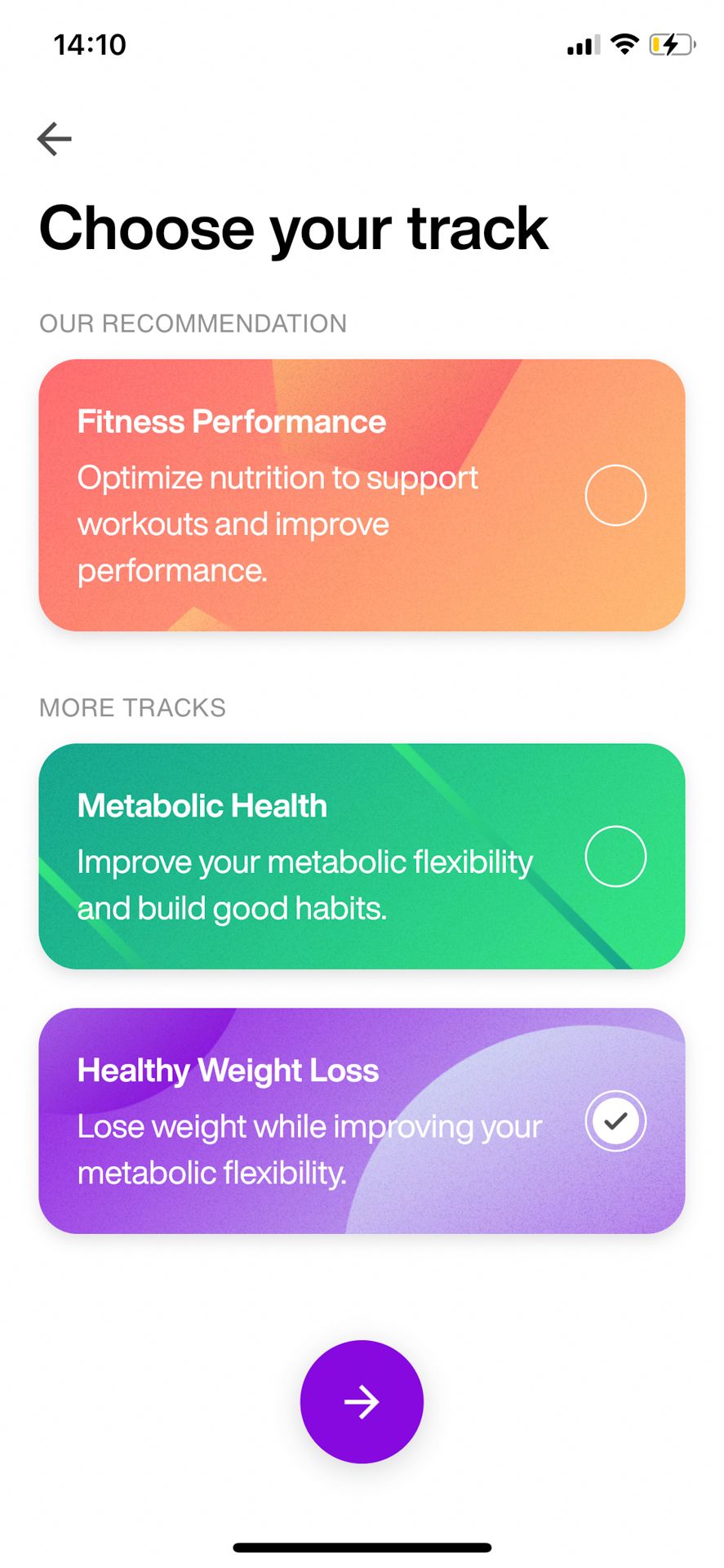
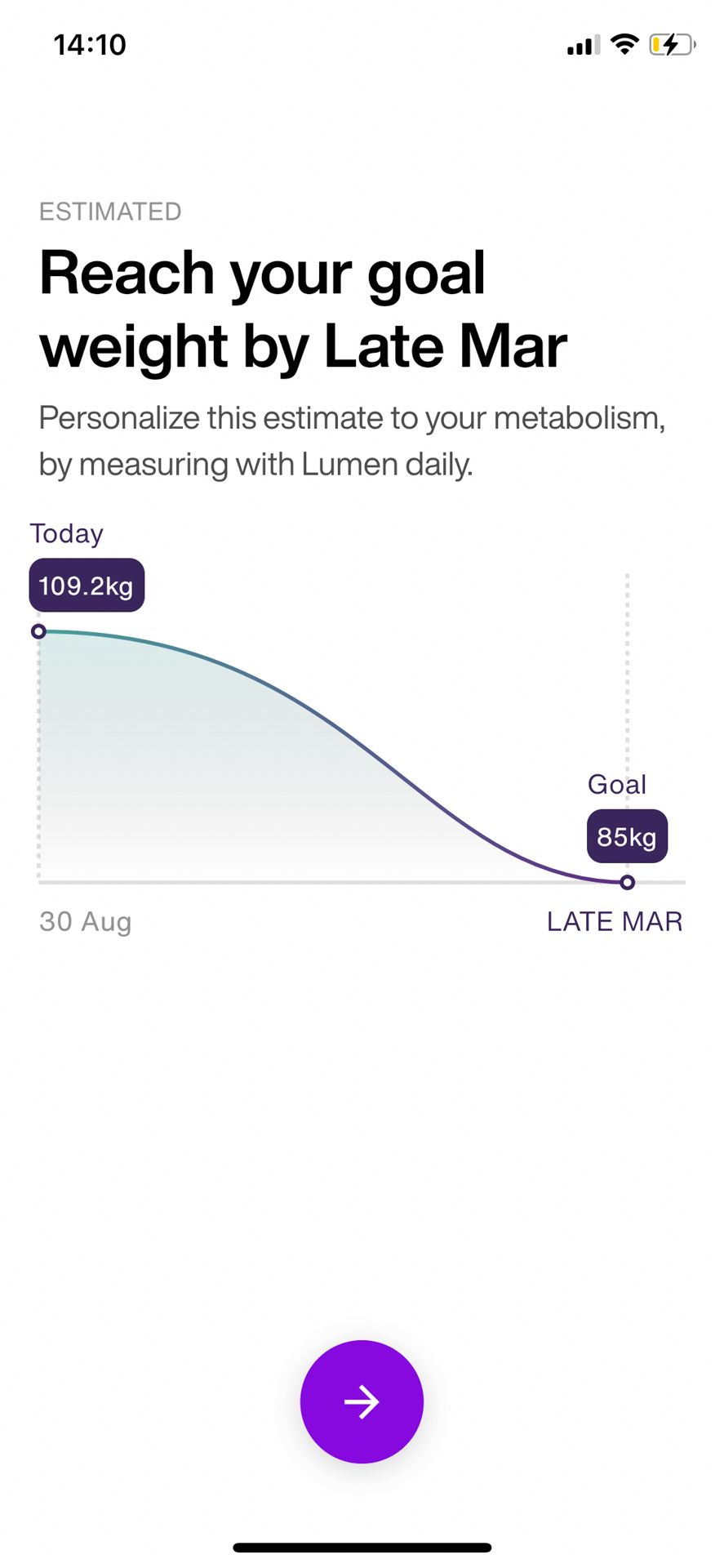
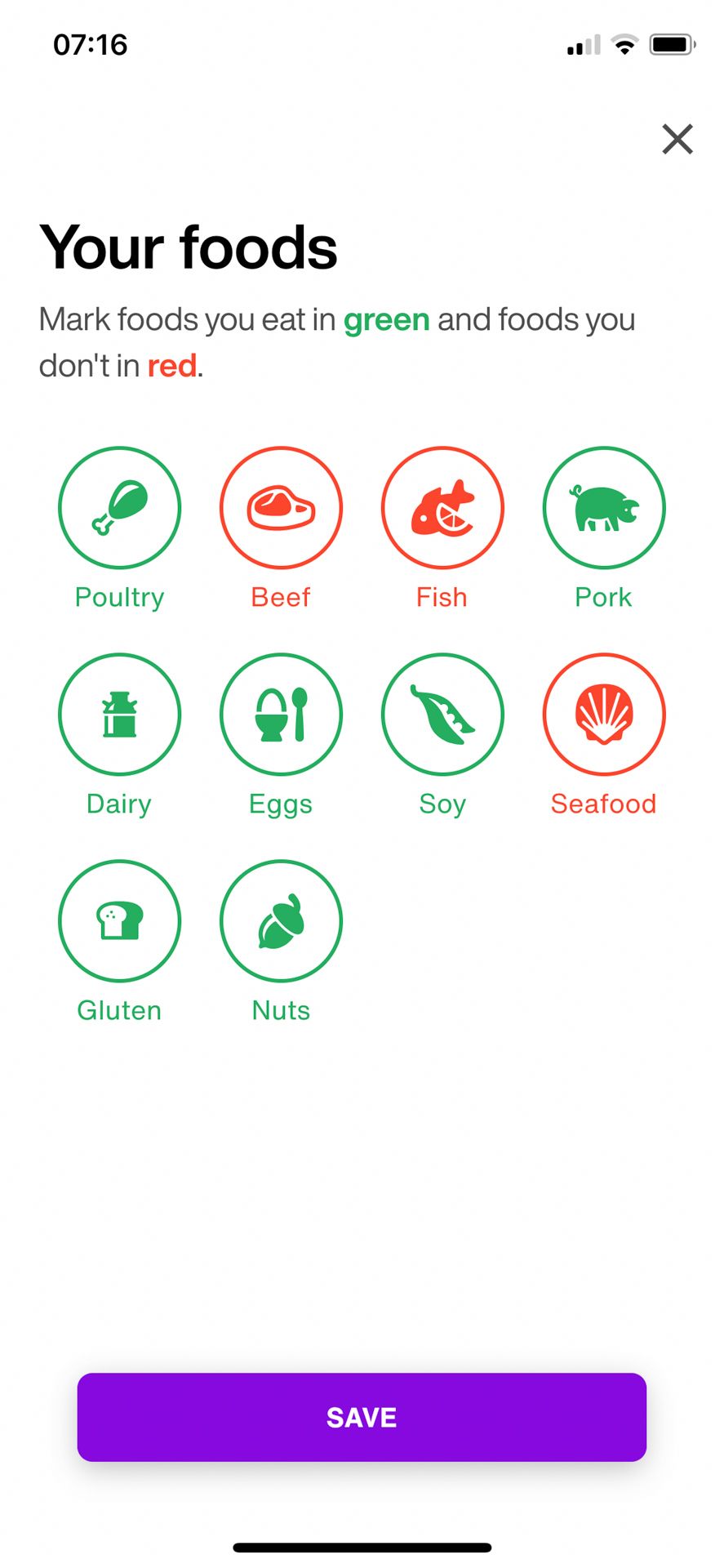
You'll then need an initial practice measurement, which I assume is used to calibrate the device and measure your lung capacity.
While Lumen claims to adjust to your individual capacity, clearly there will be some upper and lower bounds to this. If you're unable to fully inhale or exhale without coughing and spluttering, you won't be able to use the Lumen.
Using the Lumen
The Lumen itself cannot function without the app; there's no way to take a measurement and save it to the device itself for analysis later. Not only that, but it also requires an active internet connection—the app seems to be running in the cloud, so if you kill your data connection or don't have Wi-Fi, you'll be unable to take a measurement. The only slight annoyance for me was that the app itself seemed to take about five seconds to load up, I suspect because of my horrendously slow rural internet. I also experienced some buggy behavior on occasion, such as a hung analysis, or missing the measurement functionality entirely, both of which I assume were server errors.
Thankfully, there's little faffing around with Bluetooth required. After the initial pairing, it'll connect the app automatically and immediately when turned on. It'll also turn off quickly after use to conserve battery power.
Actually taking a measurement requires you to breathe in through the Lumen until you have a good lungful, wait ten seconds, then breathe out again at a steady flow rate. You have constant feedback in the app to ensure the flow rate is correct. It usually requires two measurements, though rarely I only needed to do this once, and more frequently it would fail on one and ask me to do it again.
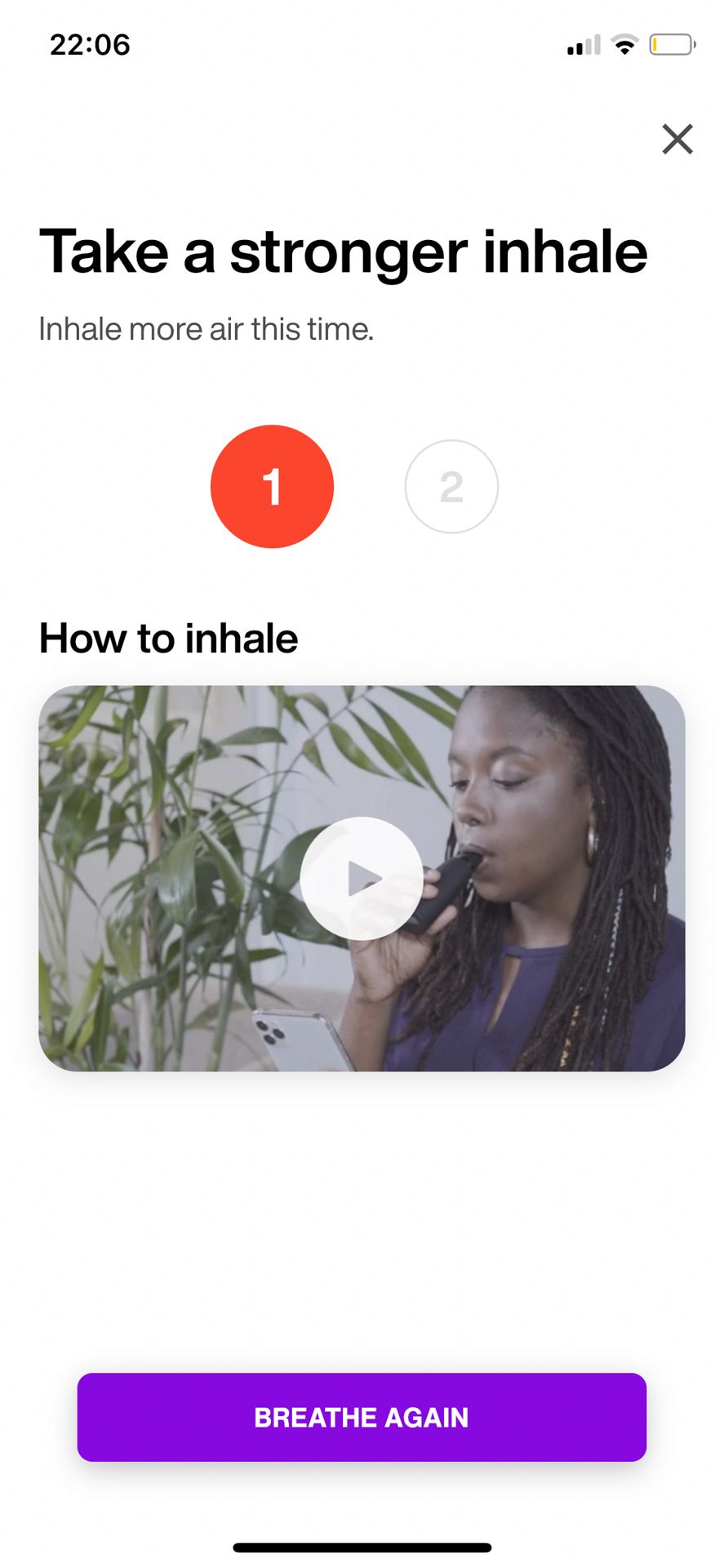
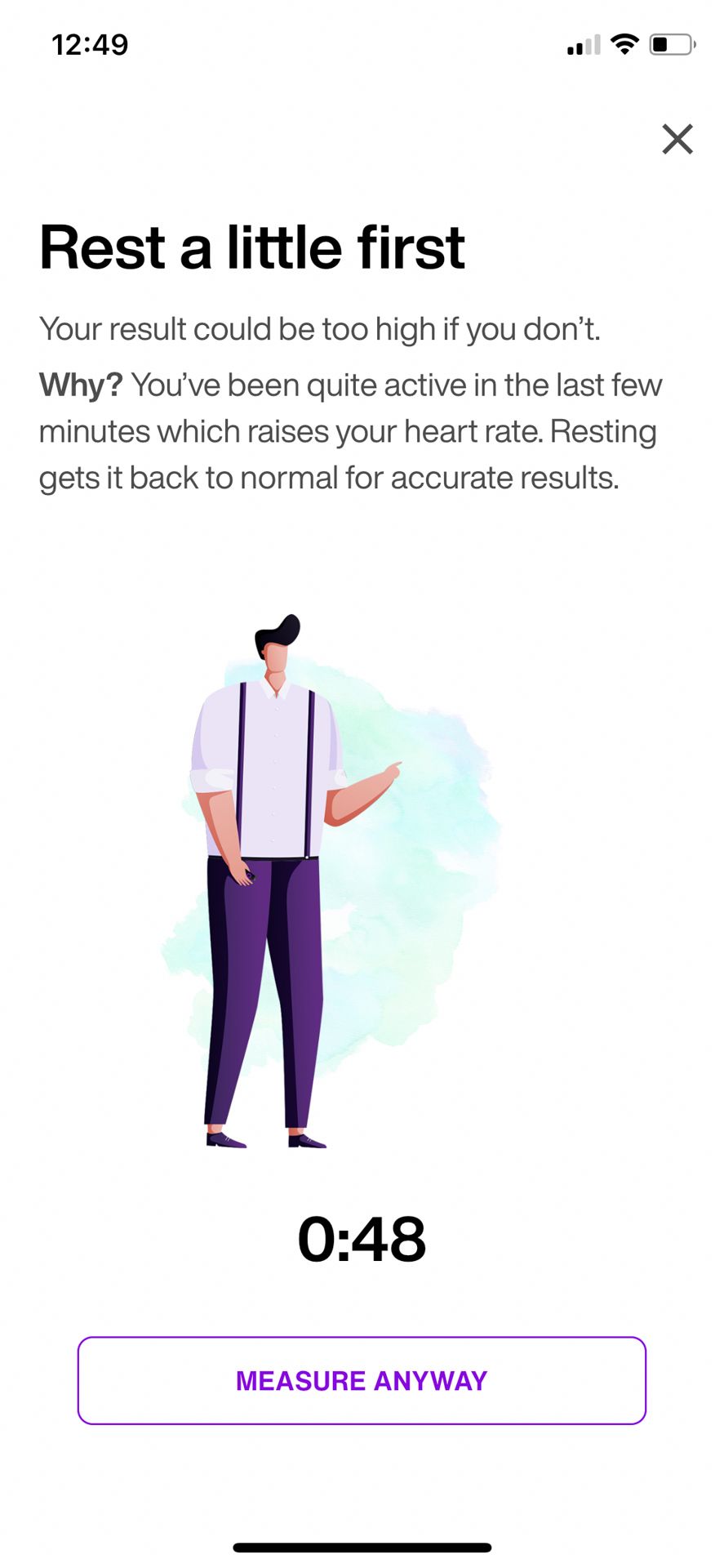
You also need to wait 15 seconds in between each attempt, so every full measurement will take anywhere from one to two minutes total. This can be annoying, but honestly, taking a moment to sit down, relax, and breathe a few times every day is hardly a bad thing.
You're encouraged to take various measurements throughout the day to assess your flexibility; 30 minutes before and after eating, before and after exercise, etc. The most important measurement is the one you take first thing in the morning. You should do this before consuming anything, hopefully having been fasting for at least 8 hours during the night. It's here where you'll also complete a short form about the previous day: how many servings of carbs you had, how much exercise you did, how long you slept. This data is pulled from Apple Health if you're recording it through other means and have given permission, so it's not as time-consuming as it sounds. Once you've done that, you're given recommended plan for the day of how many carb servings you can have.
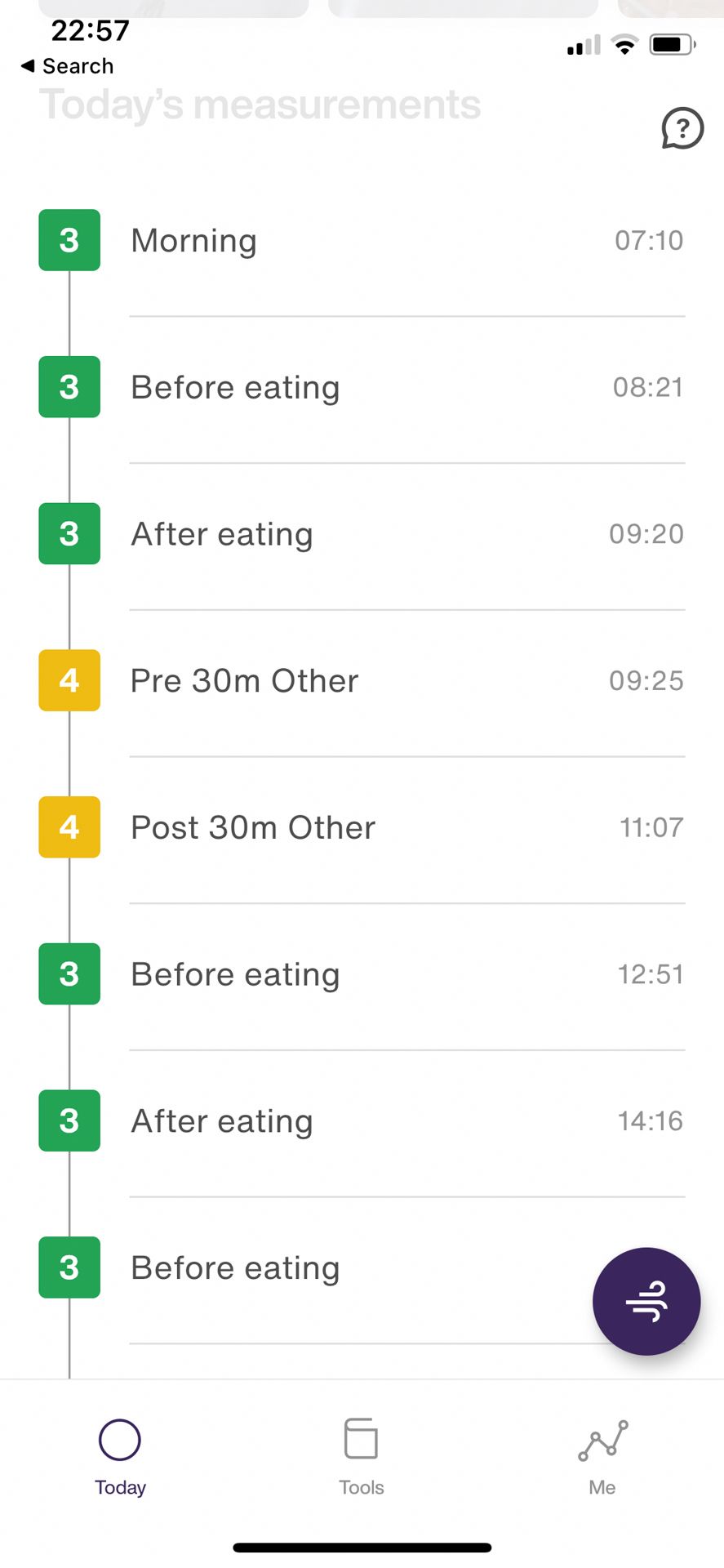
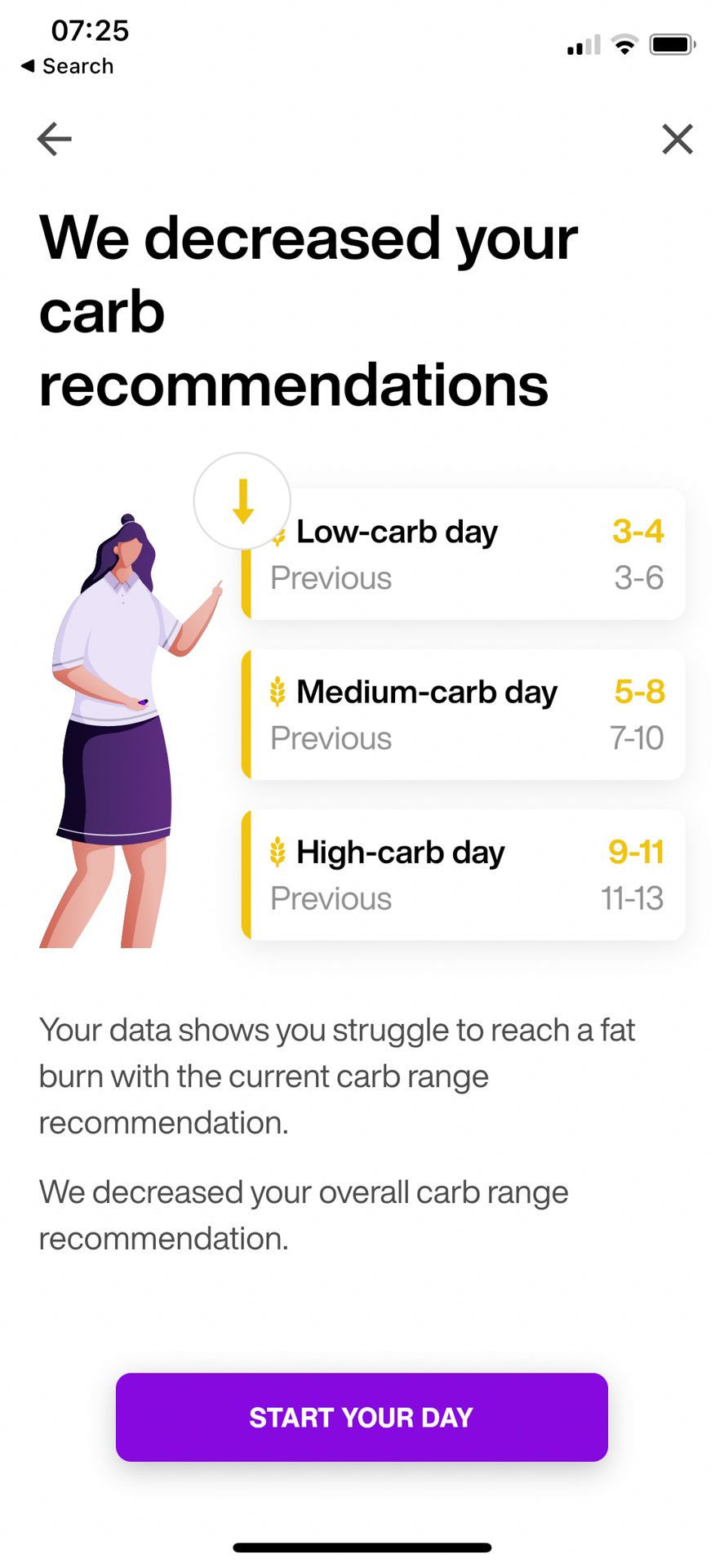
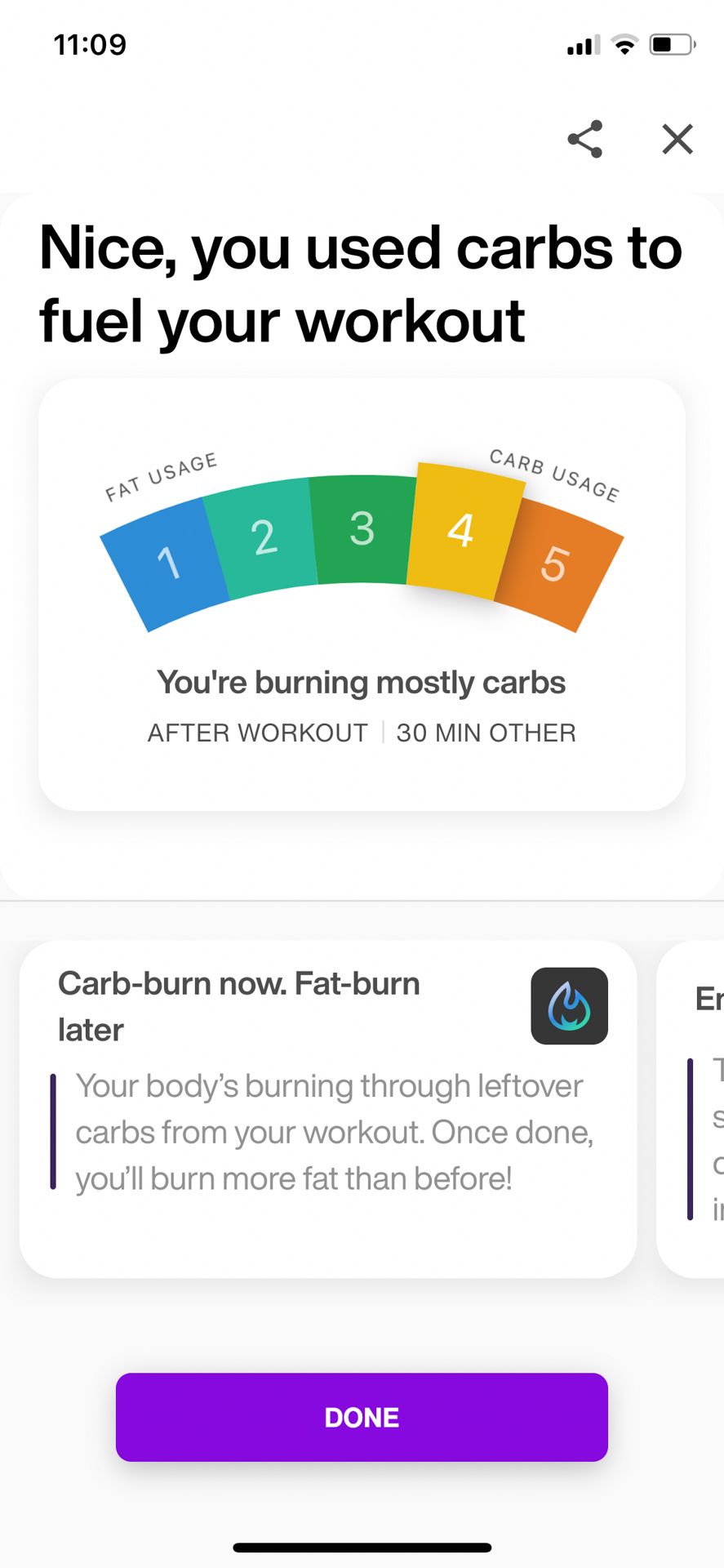
The app also generates a meal plan, matching it to your daily carbs and specified dietary needs. Don't eat fish? Vegetarian? Not to worry: your preferences are saved and you'll only be shown a choice of suitable meals.
While the recommended meals didn't look as bad as I was expecting, I'll be honest here and say I largely ignored them. I have a family, so completely adjusting our meals or preparing food separately isn't realistic. That said, I took the suggestions of the number of carb servings. If it specified a super low carb day, that's what I did.
Apple Watch App
Although the Lumen was released a few years ago, Metaflow recently launched Apple Watch functionality, so I was hoping to focus this review a little more on that aspect. Sadly, the watch app mainly serves as a notification system, reminding you to take measurements after eating, or before bed. It can't connect directly to the Bluetooth of the Lumen, so you still need to whip out your smartphone in order to actually take a measurement.
The Lumen watch app also shows a summary of the day's readings so far, and shows your recommended carb intake. It's a little disappointing, but that's largely a limitation of Apple Watch not permitting device access, rather than a poor implementation on the part of Lumen. Still, I hope to see a little more functionality here as it's developed more.
Metabolic Flexibility and Your Flex Score
Metabolic Flexibility is a fancy way of saying your body's ability to switch between burning fat or carbohydrates, as needed. In other words: it's fine to eat carbs, as long as your body uses them immediately for energy release, and doesn't decide to squirrel them away for later use. If it does, they turn into fat. A poor metabolic flexibility is one reason people can lose weight, but end up gaining it back again later.
After two weeks of using the Lumen, you're assigned a Flex score. Mine was 14.8, which sounds terrible until I tell you it's on a scale of 1-21, for some bizarre reason, so I assume that's a pass. This score is updated after a week of using the Lumen to let you know how you're improving (or not, in my case, as my score went down).
Does Lumen Actually Work?
Anecdotally, if I pigged out on carbs the day before, I usually woke up and had a bad reading of 3 or 4, meaning I was still burning off those carbs in the morning. If I was mindful of what I ate, I usually ended up with a 2. For most of the day, regardless of what I did, I had a score of 3, which means I'm burning a balance of both carbs and fat. I assume that's a good thing? On a few occasions I managed to get a 1 in the morning, but it seemed uncorrelated with what I'd eaten the day before.
It's then that you might discover the help section of the app that explains why you might receive unexpected results. It's a long list. Perhaps you ate a lot of carbs a few days ago, and only now are they starting to be burnt. Perhaps you fasted for too long. That's right, fasting means you burn into fat reserves; but fasting for too long means your body resurfaces some fat and burns that instead. What is this magical cross-over point? Who knows.
Should You Buy the Lumen?
Lumen is a fascinating device, and really simple to use. If you're looking for a way to measure your metabolism for whatever reason, this is the only consumer-accessible way to do it. There's nothing else comparable on the market. Lumen excels, for me, as an educational tool and motivational aid. Ok, I haven't lost much weight yet, but it's only been a month, and I'm not strictly following the meal plans either.
Of course, the Lumen itself won't actually "hack your metabolism": it's just a CO2 measurement device. It'll assess what fuel it thinks you're currently burning, and it's up to you to act upon that.
But for me, the numbers didn't always add up. The device gives you a discrete score of 1-5; but for me, most of the time, it was just 2-4. Sometimes the scores just didn't make sense at all. Lots of carbs the night before; 1. Fasting for most of the day; 4. Ultimately, I struggled to connect what little data the device did give me to any real-world actionable targets. The only actionable data I did get was to have a low-carb day. Every. Single. Day.
Perhaps I'm just not seeing the bigger picture. But usually, when a score is this vague and opaque, it means the underlying data is either unreliable or so derived as to be meaningless.
It's Also $19/Month
I left this point until last because I suspect you might have stopped reading otherwise. You see, Lumen isn't just a one-off device purchase: it's a $19/month subscription fee once your initial term expires (or the equivalent in your currency, £19 a month in the UK).
Pay $200 upfront, and you get a 3-month subscription included; $250 will get you 6 months; $300 will get you a full year of service. But after that, you'll need to pay $19/month to continue using the device. That doesn't mean continue paying to keep access to premium features. The device will simply stop working.
I find this pricing to be entirely unjustifiable. If it were either one or the other, I wouldn't hesitate to recommend the Lumen. Pay $300 for an innovative device that measures CO2 output? Sure. Pay $19/month, even if that meant a six-month initial commitment, and get this simple bit of hardware for free? Absolutely. But paying $300 upfront, then $240 per year for the rest of your life, assuming you want to keep using it? That's a bit much.
It's just not clear what this continuous subscription pays for. I haven't seen the recipes updating in the month since I began using it. Sure, the app runs in the cloud, but I can't see any reason for it to do so, other than to make it easy to disable your device when you stop paying. There is no ongoing personal assistant to motivate you or assess your data. There are no live fitness classes like you'd get with a Peloton or Apple Fitness subscription. If there is a solid algorithm behind the device, it could be run locally on your smartphone.
On the other hand, some people are more than happy to spend $40/month on a box containing a book and some bath salts, so in the grand scheme of things, if the Lumen proves to be a useful tool for you and you have the money to spare, then perhaps it's worth it after all.

